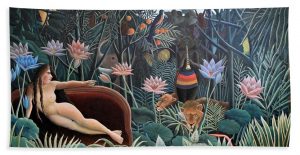Marble Right-Hand Short Side of a Sarcophagus
Roman, Severan, 220 A.D.

The first thing that catches my attention is the lion biting the deer’s head. Then I noticed a person behind the lion, raising their hand almost as if they are trying to order the lion to do something. The person has short curly hair, is wearing a type of robe, and holding a staff-like object. From my perspective, this person seems to be of low status such as a sheep herder. The lion takes up most of the basin. It has a tail thats end is out of our vision. Its hind feet are tensed and you can visually see its muscles on its leg. As we follow the tensed muscles up its back, we may not notice that their is no waves of hair on it. The lion’s fur is flat and you cannot see the sea of hairs on its body. Now, its mane is extremely detailed. There are many hairs going in separate directions and almost seems to resemble the same hair on the person’s head. There are small holes above the lion’s eyes to resemble eyebrows and they are raised so it looks to be angry. The eyes itself are not looking at the deer but instead into the distance, almost like it is staring at the viewer. Its nostrils are flared and the formation of the nose is extremely distinct. It does not look like a dog or a human, but an actual lion’s face. Its teeth are sunken into the deer’s head, but the front two teeth are visible to the viewer. The lion is represented in a position of power and intimidation. I believe that this lion is presented on a bathing basin in order to be scary or intimidating. If a person is bathing, they are very vulnerable so the lion is placed on the basin to “protect” the vulnerable person and look out in the distance for potential intruders. This is my interpretation of the lion sculpture on the basin.








 The Sleeping Gypsy
The Sleeping Gypsy

